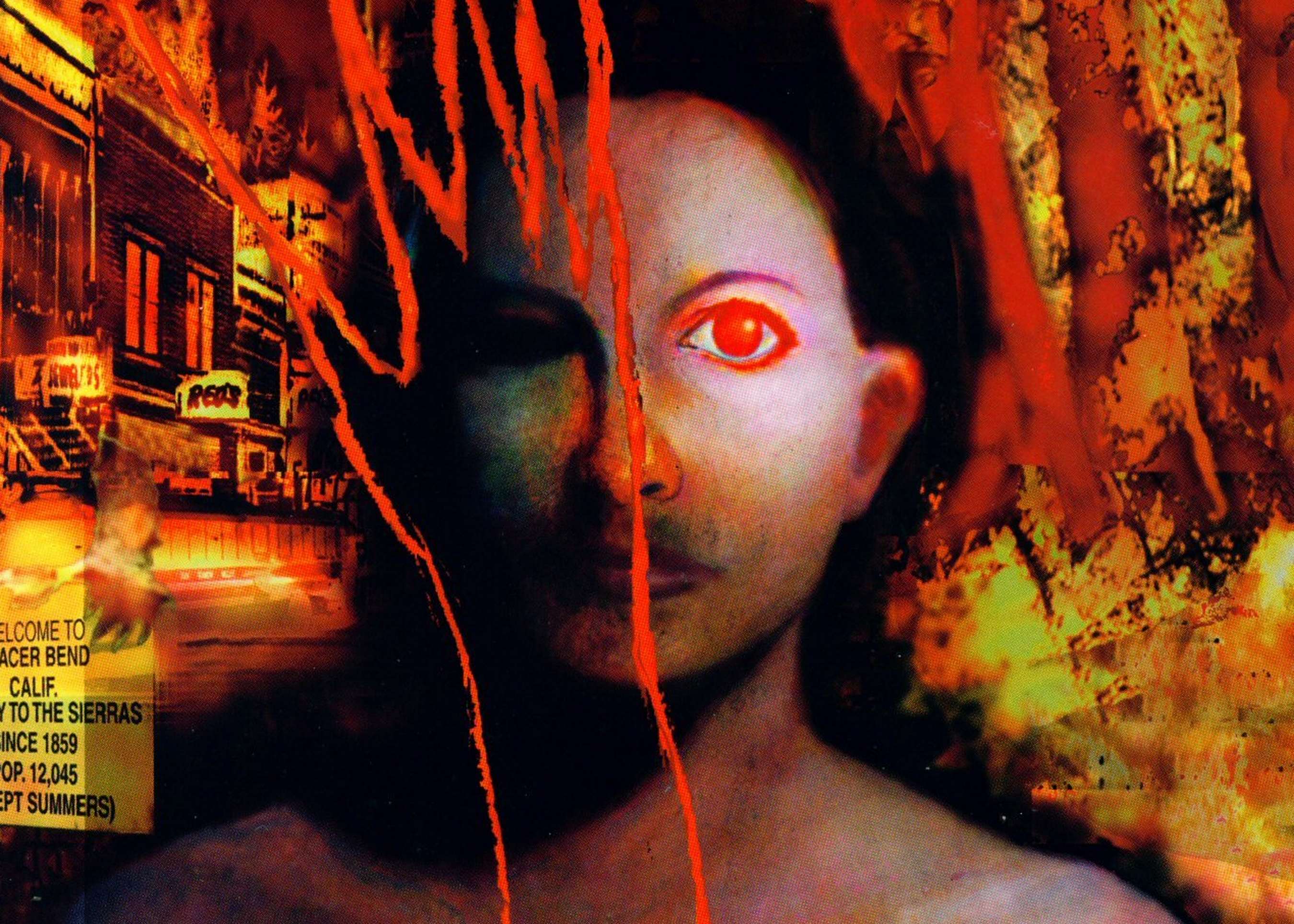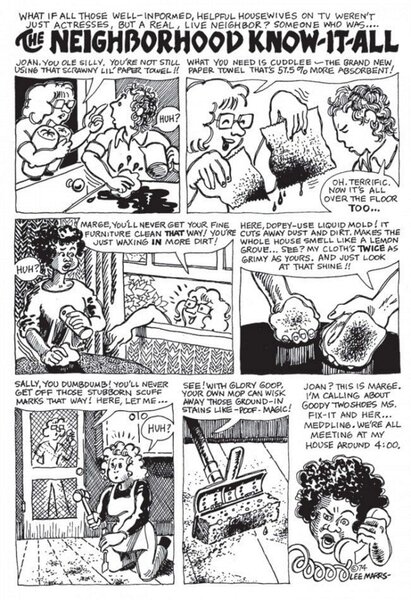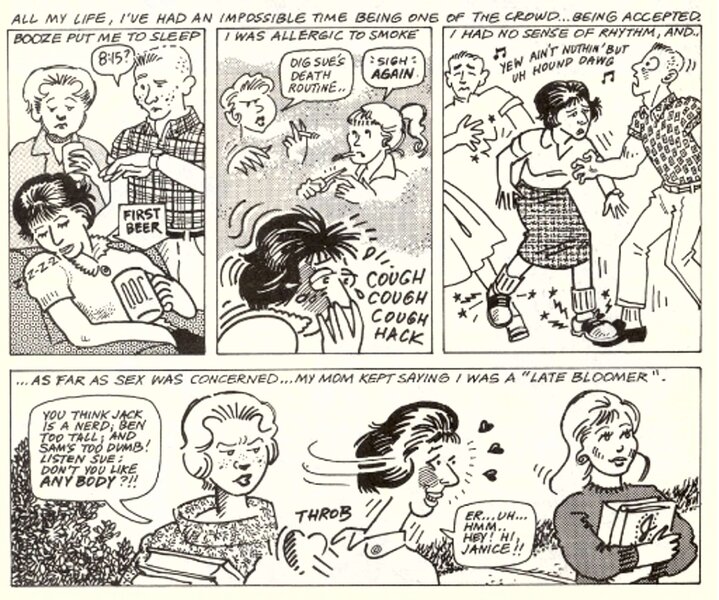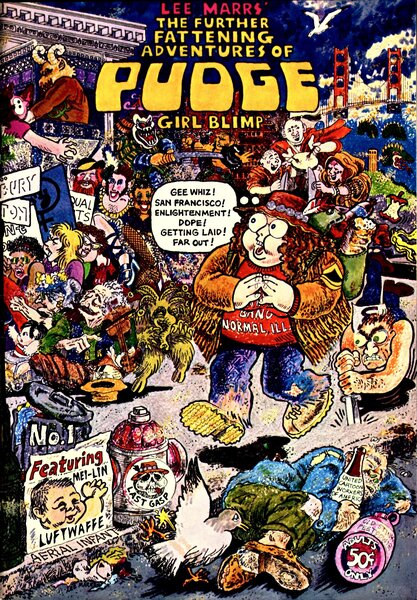Create a free profile to get unlimited access to exclusive videos, sweepstakes, and more!
Pride-ographies: Lee Marrs

The Underground Comix era began in the late '60s in response to the heavy censorship of the medium due to the presence of the Comics Code Authority. People wanted to make books that looked like their lives, and so, as we had the indie explosion in cinema, so did comics see their own groundbreaking era of creativity. Some of these comix aged well, most of them haven't, but all of them existed in the spirit of disrupting the status quo of the medium.
When discussing an era of experimental and groundbreaking autobiographical works in the comix scene, queer comix by queer creators so often fall by the wayside. While many artists of this time period went on to have illustrious careers, queer creators get nary more than a footnote. In hopes of changing the conversation for the better, we bring you Pride-ographies, a series of deep dives into queer comix history.
Lee Marrs is one of the most prolific artists of the Gay Comix scene, but much of her career has been outside of comics. This is a woman who has an Emmy for her work as an animation director, but her name is generally little more than a footnote in conversations around underground comic artists. Her career truly runs the gamut, from doing work as an assistant to the cartoonist Tex Blaisell on daily comic strips like Little Orphan Annie and Prince Valiant to owning her own animation production company.
Marrs got into underground comics via conversations with the great Trina Robbins, who founded the Wimmen's Comix collectives and to this day does significant work documenting and collecting the history of women in comics. In Marrs' words, "We all had different aims for it. We saw pretty quickly that there was going to be no money involved, but one thing that was really important to us was that as many women as possible be given this chance. Because we had a venue that could give people a chance to have their work seen, it was important for us to have about half of the book be either beginners or people who hadn't had a chance to work in comics before. This was a tenet that we held to for the whole 20 years." Yet she acknowledges in the same piece that these choices would make them an intentionally unmarketable concept in a scene defined by men hypersexualizing women.
Marrs did several short stories through Wimmen's Comix, and when Gay Comix debuted, she appeared in all of the first four issues. The first story in an issue of Gay Comix, in fact, is her piece Stick in the Mud, which details a long and storied dating history before ultimately falling in love with someone equally indecisive and "boring."
The comix work for which she is best known, The Further Fattening Adventures of Pudge, Girl Blimp, is a story about body positivity, female sexuality, and following one's dreams to the bitter end. At the age of 17, Pudge becomes interested in the hippie movement and decides to relocate to the Bay Area with the express goal of losing her virginity. Marrs portrays Pudge with a tender understanding that is rare in any medium. Though the series only lasted three issues, it left a mark on the underground comics world. A later reprint included a foreword by Gloria Steinem, ultimately acknowledging the contributions of counterculture queer feminists. Marrs had done significant work and commentary around a feeling of exclusion from the mainstream feminist movement that many queer women felt in the time, and Steinem's foreword felt like a small step in righting some of those wrongs.
One thing that comes up a lot when reading about Gay and Wimmen's Comix pioneers is the resignation that there was no way for marginalized voices in underground comics to make a full career off of creating their own work. Marrs was highly practical in her career and made prudent choices that allowed her to sustain herself financially by creating commercial art, but she noted in an interview with CBR, "If I had been able to make a living doing comics, I would have done that for my whole career. I would have just concentrated on comics, but there was no way to do that." She went on to say that having multiple interests had helped her stay employed as a creator. In fact, Marrs owns her own animation company, Lee Marrs Artwork, and did plenty of work through Time/Warner, Disney, and various other companies, specializing in 2D animation. She notes that even this is the byproduct of being in the right place at the right time — she studied computer animation early on and so was ahead of the curve when it came to the changing market of the early '80s.
This barely even begins to cover all of the things Marrs has done in her life. She did illustration work for Joe Orlando at Plop!, a humor magazine much like MAD that, unlike MAD, actually hired women. She's written and drawn some mainstream comics here and there, including appearing as the writer on two Indiana Jones series. She was an early contributor to Vertigo, writing and doing colors and the mostly forgotten series Faultlines that is very much worth a read if you can dig it up. Outspoken, critical, yet surprisingly open-hearted in her work, Marrs is an underrated great of the Gay Comix scene and beyond.




























